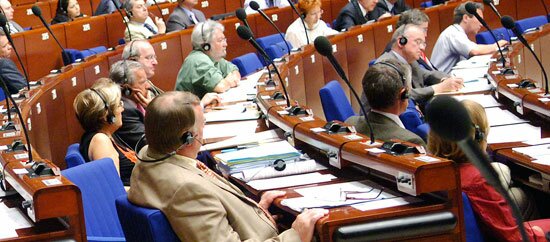Parliamentary representation



The Parliamentary Assembly of the Council of Europe (PACE) consists of a number of individual representatives from each member State, with a President elected each year from among them for a maximum period of two sessions. The present President is Stella Kyriakides (Cyprus, EPP/CD). She was elected in October 2017.
Whilst in the Committee of Ministers each member State has one vote, in the Parliamentary Assembly the number of representatives and consequently of votes is determined by the size of the country. The biggest number is eighteen, the smallest two. As there are an equal number of representatives and substitutes, the total number of members of the Assembly is therefore 648, plus 30 Observers and 30 Partners for democracy.
They are appointed to the PACE in a manner, which is left to be decided by each member state, as long as they are elected within their national or federal Parliament, or appointed from amongst the members of that parliament. The balance of political parties within each national delegation must ensure a fair representation of the political parties or groups in their national parliaments.
The accession process usually begins with a request to the Secretary General of the Council of Europe, who transmits it to the Committee of Ministers for consideration. The latter consults the Parliamentary Assembly, which in turn examines whether the candidate fulfils all the necessary requirements. This is done by an on-the-spot visit by parliamentary committees and also, since the 90s, by fact-finding missions by eminent jurists. Although not a statutory provision, it has also become customary to require the acceptance of the European Convention on Human Rights and Fundamental Freedoms by any new candidate. The Opinion adopted by the PACE then determines the invitation from the Committee of Ministers to the State to become a full member.
